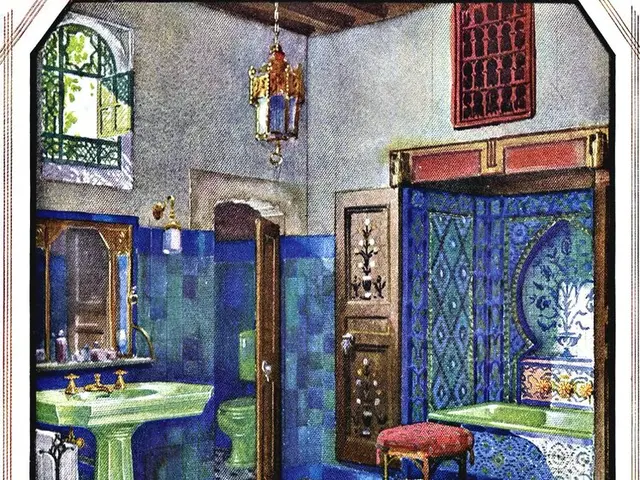Investigating Eye-Tracking Patterns through a Visual Attentive Model for Cultural Heritage Applications
Transforming Museum Visits with Eye-Tracking Technology
In the realm of Digital Cultural Heritage, a groundbreaking study has been conducted to enhance museum visit experiences through the use of a 60Hz eye tracking device, the Tobii Eye-Tracker X2-60. This hardware component has been instrumental in the study of adults and children observing museum paintings, providing valuable insights into visitor engagement and cognitive processes.
The research, centred around a novel Visual Attentive Model (VAM), has demonstrated high accuracy in identifying visitors based on their attention focus and distinctive eye movement patterns. The VAM is learned from eye tracking data of adults and children observing five paintings with similar characteristics, including the Ideal Cities of Urbino, Baltimore, and Berlin, the Inlaid chest in the National Gallery of Marche, and Wooden panel in the "Studiolo del Duca" with Marche view.
The VAM, combined with deep learning methods, offers several key applications. By capturing visitor gaze data via eye-tracking and interpreting it through VAM and deep learning methods, museums can personalize exhibits to fit visitor interests and cognitive engagement levels. This allows for the tailoring of interpretative content, multimedia, or interactive elements in real-time or in future design iterations.
Moreover, the technology supports the design of multisensorial and thematic environments that actively involve visitors, reducing passive observation and promoting interaction, which is crucial for deeper learning and emotional connection to exhibits.
Additionally, VAM combined with eye-tracking can reveal how visitors make sense of ambiguous artworks or thematic installations, facilitating activities like Multiple Interpretations, where visitors observe artworks from diverse perspectives, supported by museum educators.
Furthermore, museums can utilize aggregated attention data analyzed through deep learning to optimize display layouts, lighting, signage, and informational content, ensuring these elements capture and maintain visitor attention while avoiding distractions, thus improving overall exhibition quality and visitor satisfaction.
Insights into gaze and attention can also guide personalized navigation or storytelling through augmented reality or interactive projections, enriching the visitor’s cultural and emotional experience.
The effectiveness of this approach lies in its ability to transform passive viewing into active, visitor-centered experiences, leveraging technological advances in computer vision to interpret complex visual behaviors. The technology supports creating dramatic, layered, and participatory exhibition spaces that resonate intellectually and emotionally with visitors.
In conclusion, the integration of VAM, deep learning, and eye-tracking in museums enables highly adaptive, immersive, and personalized visitor experiences that foster engagement, enhance learning, and improve exhibition design quality. This approach aligns well with contemporary museum goals of transforming visitors from passive spectators into active participants and learners.
Artificial-intelligence, specifically the Visual Attentive Model (VAM), is utilized to analyze eye-tracking data from visitors observing museum exhibits, enabling museums to customize displays based on individual attention focus and cognitive engagement.
By incorporating eye-tracking technology, museums can create more interactive and immersive experiences, transforming passive viewing into active, visitor-centered engagements that resonate both intellectually and emotionally.




